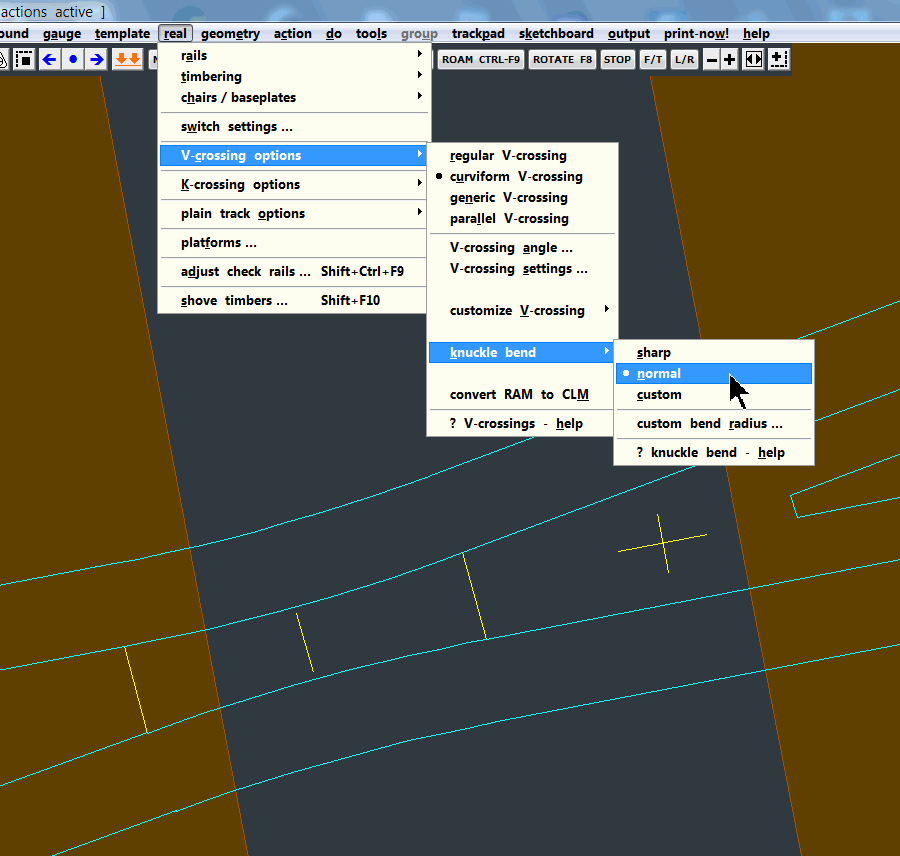S-Club-7
Member
- Location
- Just south of Stansted Airport
Whilst browsing this thread recently I followed a link to one of Martin's pages (Real Track) in the Templot Companion which I wish I'd found a few months ago.
However, when I got to the last section, Wing and check rail dimensions, which deals with the Templot representation (albeit not quite up-to-date ) but I don't think it quite covers the whole story of the prototype. So here's my two pennyworth which I do realise may not have much application to modelling but helps to complete the prototype info.
) but I don't think it quite covers the whole story of the prototype. So here's my two pennyworth which I do realise may not have much application to modelling but helps to complete the prototype info.
The following applies to the post-war REA bullhead designs used by the LNER, LMS and SR.
I believe that the final image on the page needs a few changes (shown in red) and some additional notes (below image):

Data taken from LNER Permanent Way Standards 1926 and LMS Permanent Way 1928. I have seen an Eastleigh copy of these REA standards but I haven't yet been able to source a copy. Note that there are differences between the LNER and LMS versions, in particular rail lengths and timber spacings.
However, when I got to the last section, Wing and check rail dimensions, which deals with the Templot representation (albeit not quite up-to-date
The following applies to the post-war REA bullhead designs used by the LNER, LMS and SR.
I believe that the final image on the page needs a few changes (shown in red) and some additional notes (below image):
- Wing Rail Flare Radius = 31ft 6in (I've not yet found a Templot menu item for this)
- Check Rail Flare Radius = 33ft 6in (I've not yet found a Templot menu item for this)
- Knuckle Bend Radius -- see table below (Templot trackpad > real > V-crossing options... > knuckle bend > custom bend radius...)
- Check rails. These are vertical so the flare curves are cylindrical.
- The point and splice rail assembly between the blunt nose and end of the splice are vertical. From there to the first "normal" chairs (usually S1 or L1) the point and splice rails twist from vertical to 1 in 20. Any intermediate "special" chairs (e.g. B, C, D etc) have a varying inclination to accommodate this gradual twist.
Code:
Xing Angle Knuckle Bend Radius
1 in 1½ 1ft 0in
1 in 2 1ft 6in
1 in 2½ 2ft 0in
1 in 3 2ft 11in
1 in 3½ 4ft 1in
1 in 4 5ft 4in
1 in 4½ 6ft 0in
1 in 5 6ft 8in
1 in 5½ 7ft 4in
1 in 6 8ft 0in
1 in 6½ 8ft 8in
1 in 7 9ft 4in
1 in 7½ 10ft 0in
1 in 8 10ft 8in
1 in 9 12ft 0in
1 in 10 13ft 4in
1 in 11 14ft 8in
1 in 12 16ft 0in
1 in 14 18ft 8in
1 in 16 21ft 4inData taken from LNER Permanent Way Standards 1926 and LMS Permanent Way 1928. I have seen an Eastleigh copy of these REA standards but I haven't yet been able to source a copy. Note that there are differences between the LNER and LMS versions, in particular rail lengths and timber spacings.
message ref: 3472
Last edited:
 Search
Search

